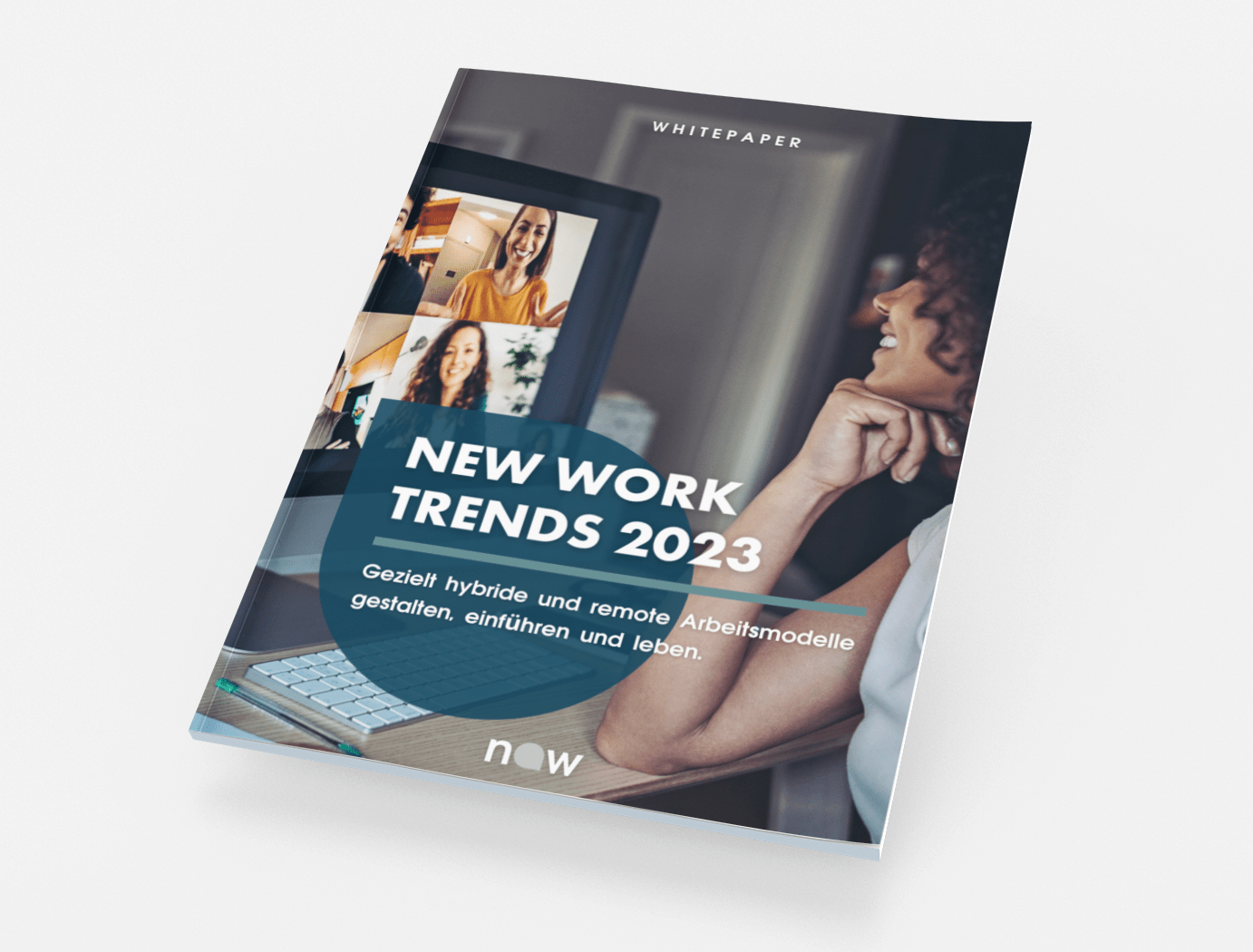
Almost exactly one year ago, I asked myself how New Work and Hybrid Work would continue. What would be in store for us in 2022? What trends would there be? At the time, I derived ten success factors in relation to a hybrid working world for companies from my intensive engagement with these questions. A year has passed since then and now I am asking myself questions again. Was I right with my preview? Here I take stock and evaluate my predictions based on my experiences over the past year.
These success factors will not be detailed below. A look at the Whitepaper from 2021 is therefore worthwhile. From cultural onboarding to important coffee machine conversations to asynchronous work. Many of my success factors I would still underline the same way after one year.
Hybrid Work meets meaningfulness
My first trend and success factor at the same time was the meaningfulness behind work structures. Announcements regarding the location during work, such as "two fixed office days," only work to a limited extent. You have to convey to employees the meaningfulness of their work and offer a logical reason for their presence in the office.
In my opinion, this view is still true to a large extent. Nevertheless, I would argue that it makes sense to work with certain orientation frameworks in order to give employees room for maneuver. Especially after long home office phases, it can definitely make sense to set a team day for mutual personal exchange. In the long run, however, meaningfulness will win out. If I don't get any added value from my behavior, it will be very difficult for me to maintain it.
Talk to me again
The second success factor was that companies need to have a regular exchange with their employees about how to improve the organization of work within the company. This is still an enormously important point, of which I am 100% convinced. Within the last year I could observe pulse surveys in many companies, which is the best proof for this.
If you're secretly thinking "pulse what?", feel free to dive deeper into the Hybrid Work Assessment dive deeper. The tool is the best way to find out what makes employees tick and how to improve the performance of the work organization according to New Work.
No, digitization is not a project!
A clear statement that should imply that digitization will be an ongoing task in the coming years. To this, I can still only say: Yes, simply yes! In view of the advancing use cases of AI, I am even more convinced than ever of this statement.
Asynchronous work
This trend implied a clear announcement: Our handling of mails, messages and co. must become more efficient. In this regard, I predicted that forms of communication and how we deal with them would be an important topic for companies. I am still of this opinion, but I don't see any best practices, let alone large-scale sensible solutions for the flood of messages. Organizing asynchronous work is therefore an open to-do that belongs back on the list in 2023. I was not wrong with this prediction, but I was too early.
Cultural onboarding
Companies need more targeted and better onboarding concepts in the hybrid environment to also provide networks and culture. That was my claim and my prediction last year. As I could observe, I was exactly right with it. Over the last few months, many companies have redesigned their onboarding processes, sometimes even with the help of virtual reality.

Revitalize internal communities in a targeted manner
Companies need to evaluate which internal networks are important for the organization and revitalize them. This is still a crucial success factor for Hybrid Work, but it was not the focus of attention in many companies last year. Other topics took precedence.
The human side of the digital workplace
Companies need meaningful overall concepts that focus on people and not exclusively on technical tools. I would still emphasize this statement from last year today. In this regard, many new functions are currently appearing, such as Microsoft viva, which expands Microsoft Teams into more of a holistic leadership and task management tool. However, I still see very little of these approaches, especially in Germany, which does not call their importance into question.
Onsite is the new offsite
In short, the trend prediction was: What we used to do in conference hotels, we now do in the office. Just as briefly, my observation in 2022: Workations and offsites at great locations were back with a vengeance.
The importance of coffee corner conversations
Opportunities for chance encounters must be recognized, revived and created. This was and is one of the most important issues that are part of a good hybrid work model. The trend with my word of the year 2022 was a bull's eye.
Creating spaces that give back.
Companies need to completely rethink spatial concepts in order to build the workplace of the future. Many companies have tackled this issue in 2022, but unfortunately, in my opinion, they are still far too attached to the status quo. Much more courage is needed here to really dare to do something new. Definitely remains on the to-do for me and my clients for the next year.
The bottom line is in. I had my finger on the pulse of many trends, but not all trends have been equally embraced and already addressed by organizations. And not all issues have the same importance for organizational performance. The bottom line is that I am very pleased with my predictions. A look into the New Work Trends for 2023 can definitely be worthwhile.

